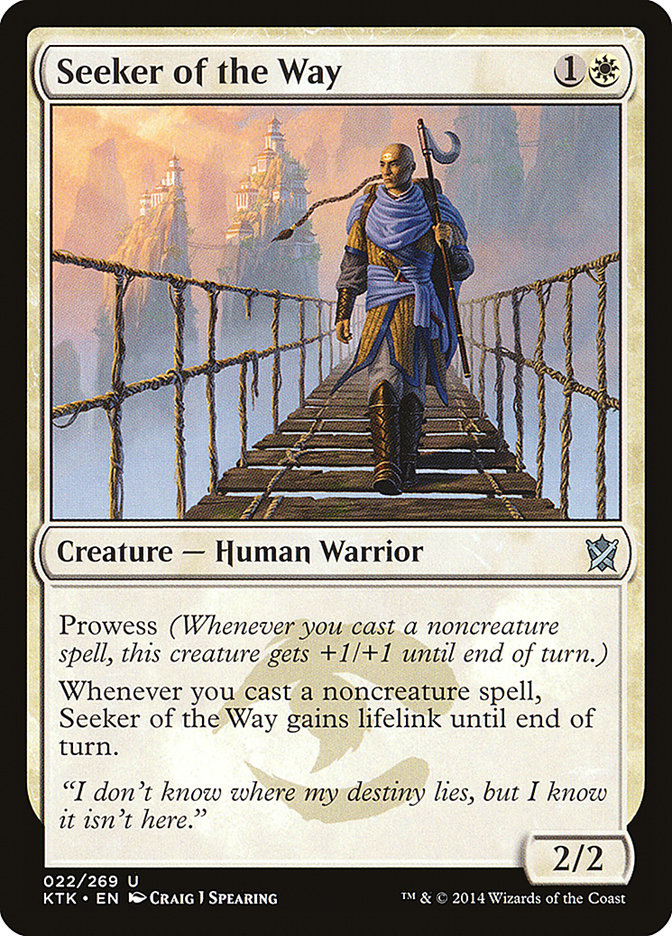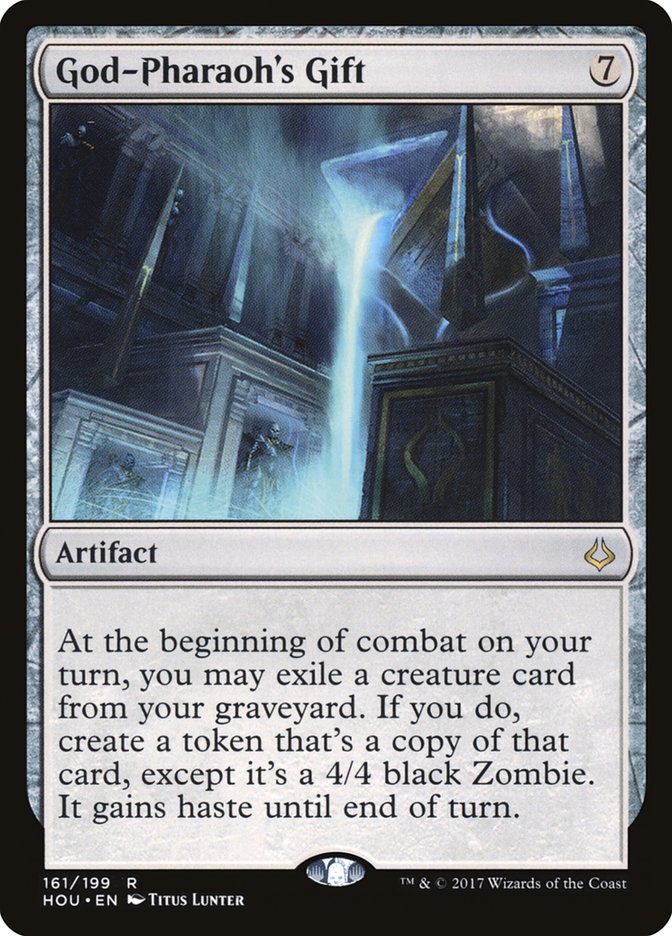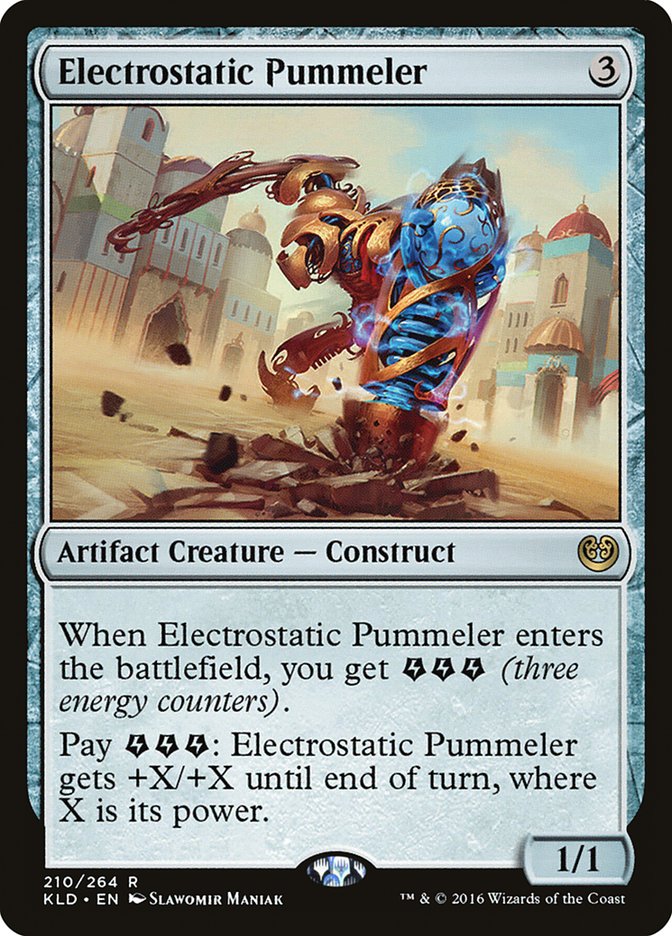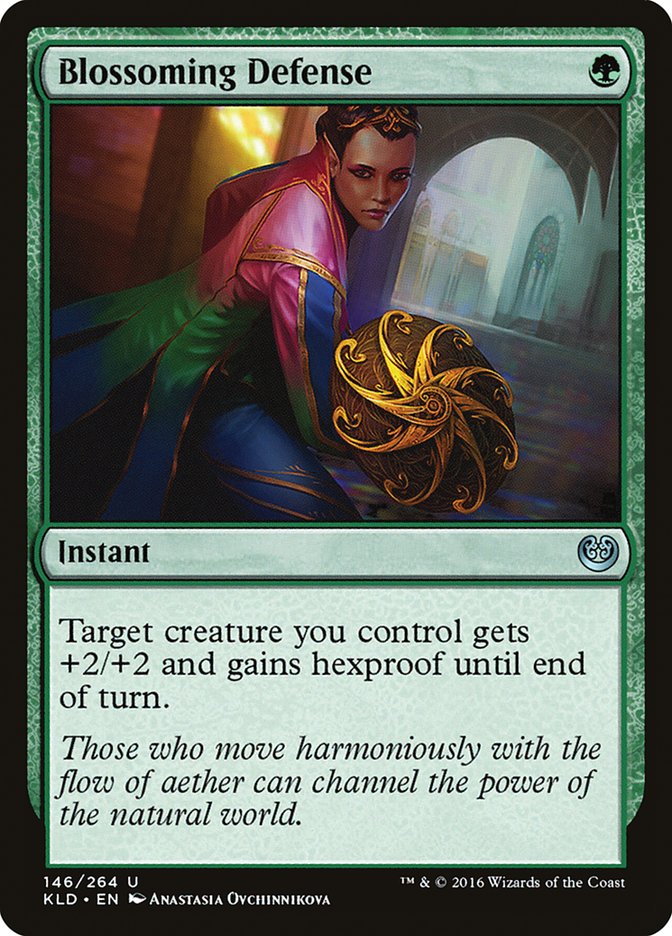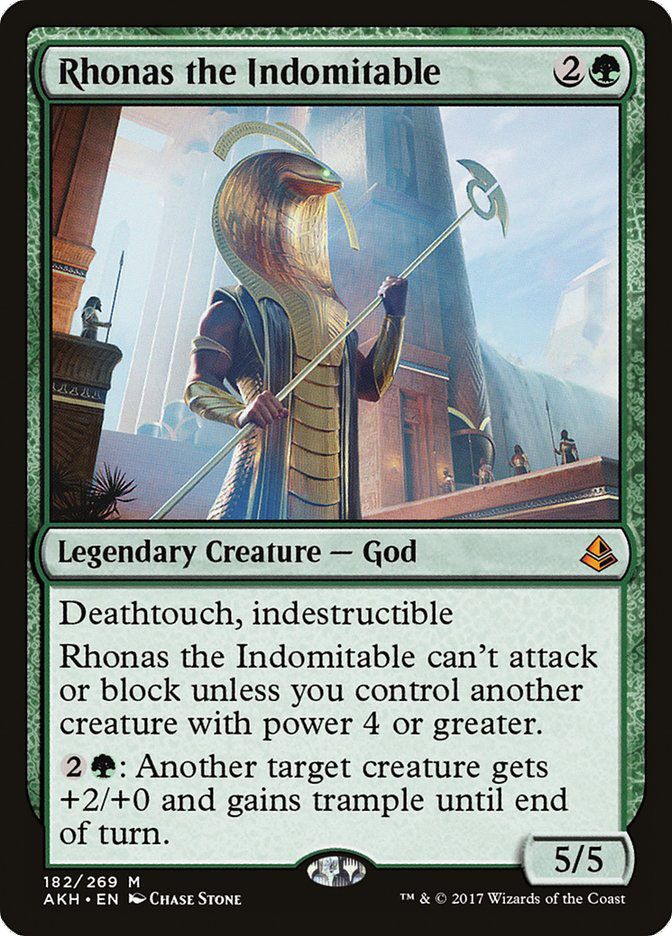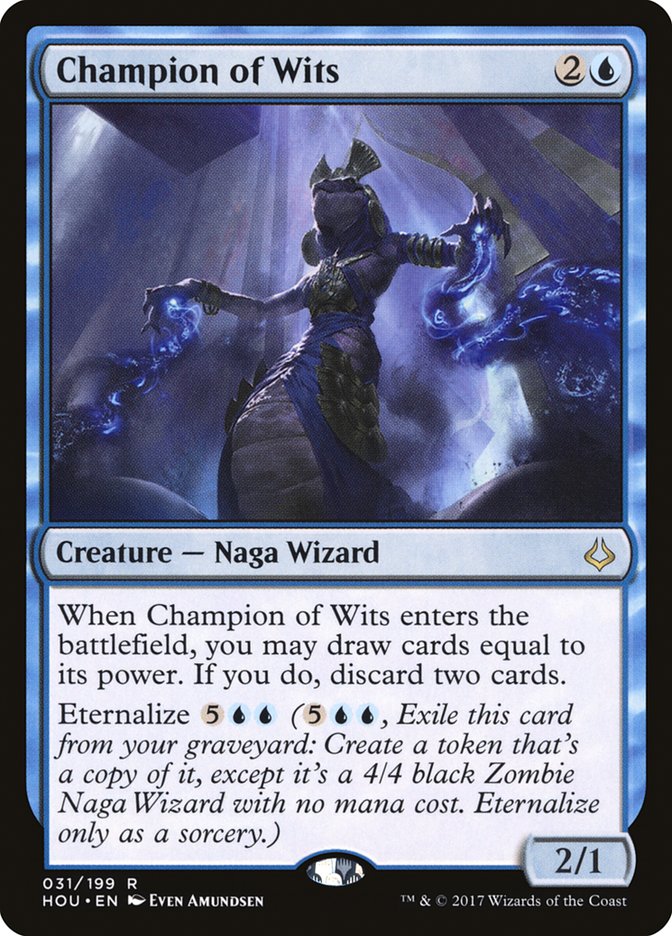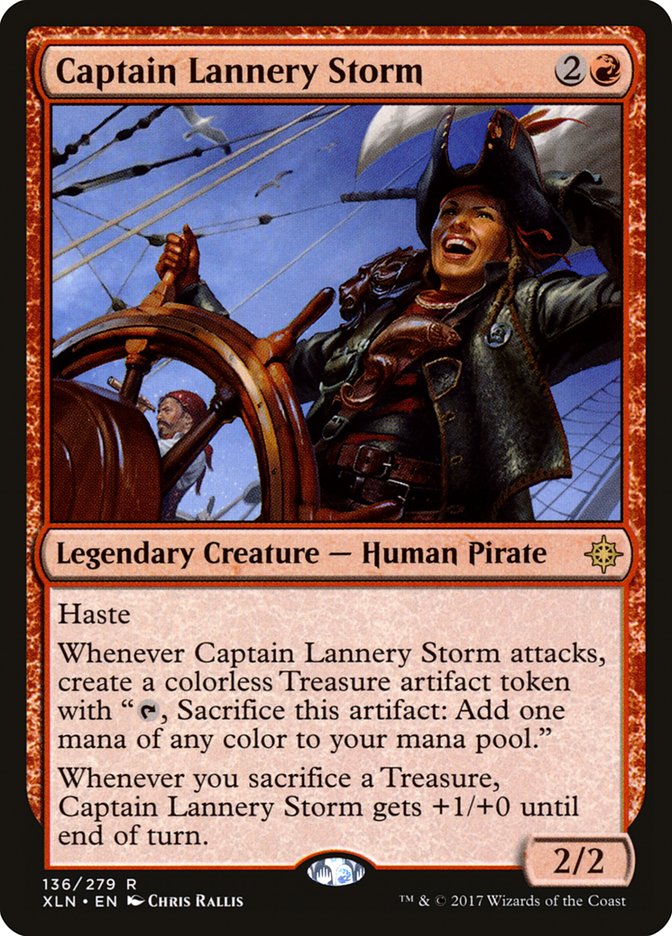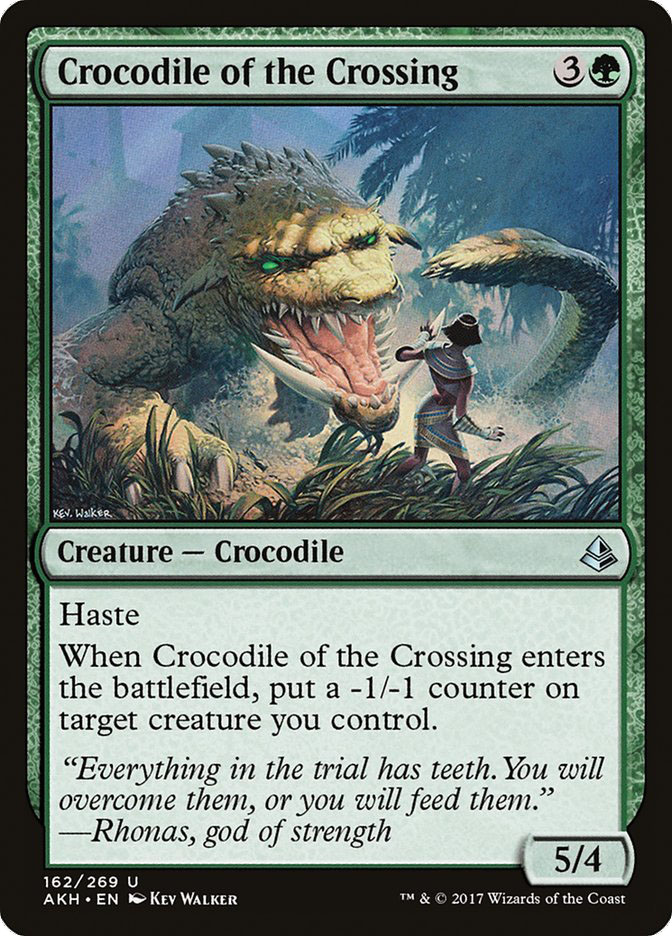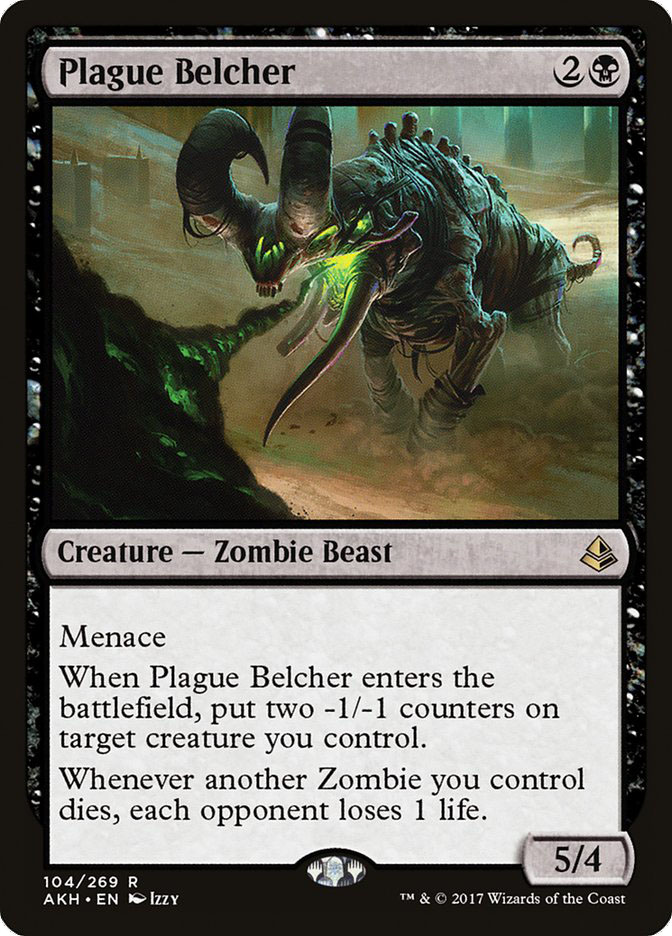So you’ve decided to start looking for a deck for Standard that will survive rotation. You’ve watched Ross Merriam piloting Jeskai God-Pharaoh’s Gift; you’ve read all about Brad Nelson, Brian Braun-Duin, and Corey Baumeister dominating in Denver; you’ve dismissed Ramunap Red because you like fun. And still you aren’t sure what you want to play. In your Frantic Search for a deck, you will click on literally anything with the Standard tag, hoping to see something that catches your eye. And here you are.
Live shot of…well, you.
I am going to be honest with you folks – if you want to win a Grand Prix, go read what Brad wrote. Go watch Ross play. The decks we are about to discuss will not win you a GP…unless there is a prize for fun. And hey, maybe you start strong and get a feature match along the way. I have had a couple of ideas swimming around in my head for a few weeks that are largely untested and, as I am in the middle of a three-week stretch on the road, this seems like a good time to throw some of them out there.
A Gift That Hits Back
I don’t know why, but some people were under the impression that God-Pharoah’s Gift wasn’t a good card. I like to call those people “incorrect.” Did you know that thing isn’t legendary? Well, my friend, it sure as heck is not. And that can lead to some very, very swift game endings.
The obvious play with Gift is to reanimate a load of creatures that provide value on entering the battlefield. These decks have proven themselves and have been very successful, but they can sometimes struggle to fill the graveyard with enough creatures. This is why these decks run cards like Ipnu Rivulet and Minister of Inquiries, cards that otherwise would not be anywhere near a competitive deck. Perhaps there is another approach to take here.
Electrostatic Pummeler is a card I have played with and really not enjoyed for the most part. The card, and the deck for that matter, are capable of some very fast wins and some powerful turns, but the play patterns were just not all that interesting and I am always wary about decks that need to run so many pump effects. Opening hands of three lands, three pump spells, and Attune with Aether just do not excite me. But if we could start Pummeler as a 4/4, our reliance on pump spells goes way down and we gain a little more resilience in the process.
To make Electrostatic Pummeler work, you need energy and pump spells. You might be able to cut the pump spells if you have enough energy generation, but something like Blossoming Defense or Supernatural Stamina to protect Pummeler is going to be essential still. However, we can play some creatures in this deck that we would otherwise want to avoid because of our interest in reanimating them instead of having to cast them.
The biggest question to me is whether we want God-Pharoah’s Gift / Gate to the Afterlife or The Scarab God. Playing the artifact package takes up more slots but does let us play green if we want it, while The Scarab God is more efficient, easier to cast, and able to get more than one creature per turn. The Gift deck is likely Temur, while going with The Scarab God is probably Jund with a blue splash. Wet Jund, if you will.
The Temur Approach
One thing we know about God-Pharoah’s Gift decks is that you need a critical mass of creatures, along with ways to get them in the graveyard, to be able to start up the tutor engine of Gate to the Afterlife. I honestly cannot imagine playing this deck and expecting to get to seven mana before one of us dies, even though we are likely playing four Servant of the Conduit. Dedicating six slots to cards that neither generate energy nor pump our win condition might seem rough, but that free reanimation and the haste being tacked on make for a giant incentive to go this route.
Green gives us a few things. Blossoming Defense is the cheapest and most powerful way to protect our game-winning creature while also providing a nice bump to power. Bristling Hydra and Longtusk Cub are proven game-winners that provide energy and have no problem being reanimated as 4/4 threats. Attune with Aether is just one of the most important spells in the format right now, and especially in three-color decks that want to use energy in any way.
I’m also intrigued by Resilient Khenra here; although it cannot pump a freshly-Gifted Pummeler (unless you have two copies of Gift, but you are probably winning that game anyway), it can do so the next turn. It can also target itself, and in response to that trigger, we can cast our pump spells to effectively mimic Electrostatic Pummeler. One other card I really, really like here is Rhonas the Indomitable. Pushing through damage with trample looks like it will be important to this deck, especially if we have to player fewer pump spells in order to turn on Gift. Rhonas not only provides that, he makes for a juicy Gift reanimation himself.
Red generally contributes Insolent Neonate, Cathartic Reunion, and occasionally Tormenting Voice to this style of deck. Neonate is one of the best cards in the current Gift decks and will retain its spot here until rotation kicks it out, and I think some number of Cathartic Reunion are needed in at least the Gift version. Where we diverge is in the inclusion of two powerful Limited cards that have yet to see Standard play: Lightning Runner and Scrapper Champion. One of the things I have been curious about is the combination of double strike and God-Pharoah’s Gift, and this deck gives us the perfect avenue to explore that combination, as both of these cards make energy and can just win the game if they are made into 4/4s.
Blue is the one color I wish we did not need. It won’t offer us pump spells and probably won’t give us game-winning creatures, but it has two incredibly important cards in Minister of Inquiries and Champion of Wits. I could even see omitting the Minister if we could find an energy-producing alternative for one mana, but Thriving Turtle is not exactly breaking down the door to see play.
This version of the deck loses one card come rotation, but it is an important one: Insolent Neonate. The card is just tailor-made for this deck: it puts two creatures in the graveyard while triggering Gate to the Afterlife, costs a single mana, and has the surprisingly-relevant menace keyword, which matters a lot more when the Neonate is swinging for four.
The rest of the deck is largely untouched, and so far isn’t gaining many toys from Ixalan. We would not expect to gain any energy, of course, but as yet we have not seen many pump spells and none that appeal. Herald of Secret Streams makes Longtusk Cub, Scrapper Champion, and Bristling Hydra potentially unblockable, but at four mana I would want a little more bang for my buck. Maybe with some other ways to spread counters around, like Verdurous Gearhulk, this could be a plan.
The Scarab God Plan
The draw to this version is that we don’t need to focus so much on creature count, as The Scarab God doesn’t have a minimum creature requirement in order to make it good. What it does have is a relatively high activation cost and the ability to activate it multiple times per turn. We can therefore focus less on cards like Minister of Inquiries and instead look at ways to keep our threats alive and make them big enough to make a dent.
While it may seem strange playing this deck without a way to load up the graveyard, the strategy is a little different. As The Scarab God doesn’t give haste to the Zombies it makes, we are not looking to win out of nowhere as much as we are looking to just protect a threat until the opponent runs out of ways to stay alive. Pummeler decks already stretch opposing removal very thin, and with The Scarab God doubling up on the efficiency of those threats, we are very likely to outlast the opponent.
Adding black to the mix unlocks a few new spells to protect our game-winner: Destined, Without Weakness, and Rush of Vitality are all solid options to save an attacking threat from removal, and Supernatural Stamina is a big surprise to an opponent that gang-blocks, potentially letting us sneak in a couple of extra points while also bringing back that threat and any energy that comes with it. We also can look at adding Grim Flayer and/or Winding Constrictor to the picture, both of which work very nicely with our gameplan.
The rest of the deck looks very similar to the God-Pharoah’s Gift version. Energy generation and some manner of removal will still be important, and I am even considering Die Young as a possible addition to fill both of those roles. Now there’s a sentence I wasn’t expecting to type. Black’s general paucity of energy does leave us needing to be more careful about how we spend it, but the added durability it provides should balance the scale.
One big bonus to The Scarab God is the ability to pull creatures from the opposing graveyard. With Temur Energy being all the rage right now, it’s not impossible to steal a Servant of the Conduit or Bristling Hydra from the opponent. Reanimating an opposing Earthshaker Khenra or Ahn-Crop Crasher to allow a lethal attack from a Lightning Runner sounds very appealing to me.
There are two potential additions so far from Ixalan. Captain Lannery Storm has haste, which is a big help in decks like this that really tax instant-speed removal. The Treasure tokens she creates not only pump her, they make mana to help us cast more pump spells. As our available mana can often limit our options there, I like this addition a lot. Deeproot Champion is more of a gamble, as it does rely on non-creature spells to get bigger, but we should have a fair few of those.
Is It Time to Get Solemn?
Temur Energy and B/G Constrictor won a few recent Standard Grand Prix. To be fair, Brad Nelson won them and his decks were then considered the best in the format, but the point is still valid.
Both decks rely on mechanics that Solemnity was designed to limit in Standard: energy and +1/+1 counters. Although commonly considered a sideboard card, I found myself wondering whether we might be able to come up with a brew that makes a maindeck Solemnity worthwhile. There’s no doubt that landing one on turn 3 against Temur or B/G Constrictor makes those decks significantly worse, but is it enough and do we have a strong enough plan otherwise to make this worth pursuing?
Answering that requires looking at the cards in Standard that accumulate counters of some type that we do not want to have. Consuming Fervor, for example, is a lot better if that upkeep trigger doesn’t actually do anything. Having a three-mana enchantment that does no damage is not what we want in the sort of aggressive deck that would want to play Consuming Fervor, however, so we need a different plan.
Fortunately, green and black’s theme in the Amonkhet block was manipulating -1/-1 counters. Okay, this seems promising. While we won’t be able to make use of the sweeter synergy-driven cards like Hapatra, Vizier of Poisons and Nest of Scarabs, we do get the very impressive consolation prizes of Exemplar of Strength, Channeler Initiate, Baleful Ammit, and Ammit Eternal.
I could see a case for the inclusion of Decimator Beetle for the games in which we don’t draw Solemnity, but it becomes a lot worse with one. Defiant Greatmaw might be a better option as it is the same base size as the Beetle with a two-mana discount. Crocodile of the Crossing is another option for big beefy beaters, and has been close to a playable card for a while even without the synergy here. Seems like this deck is going to involve lots of teeth.
Plague Belcher is an interesting option, as we are not exactly replete with Zombies in the current configuration. We might be able to retool the deck in such a way, likely making it Abzan and cutting the Exemplar of Strength and possibly Defiant Greatmaw, and that angle is worth a look. It is probably less capable of the very strong turns 4 through 6 that the Abzan version can have with Solemnity on the battlefield, but it is also probably more consistent.
The issue with any deck built to capitalize on the unique effect provided by Solemnity is the inability to reliably find the card itself. Clearly Razaketh’s Rite can help there, and it can be cycled away when not needed, but something a little cheaper would make me a lot more comfortable.
It would be remiss of me to not touch on the possibility of a Thing in the Ice deck that plays Solemnity instead of Dynavolt Tower. With Solemnity on the battlefield, we need only one spell to transform Thing in the Ice, and that can win a game in a hurry. Firebrand Archer and Thermo-Alchemist are fine options in this deck as well, and after sideboarding, a switch to Dynavolt Tower is easy to achieve. I don’t know how this deck lines up with the current metagame, but I have to imagine a transfomed Thing in the Ice is bad news for Temur Energy, Zombies and Ramunap Red. Of course, this deck becomes illegal in a couple of weeks, so if the idea appeals to you…now is the time.
That’s all we have for this week, folks. As always, thanks for stopping by The LAB. This week I am taking a well-deserved break from judging before finishing out the year strong. Until next time…Brew On!




